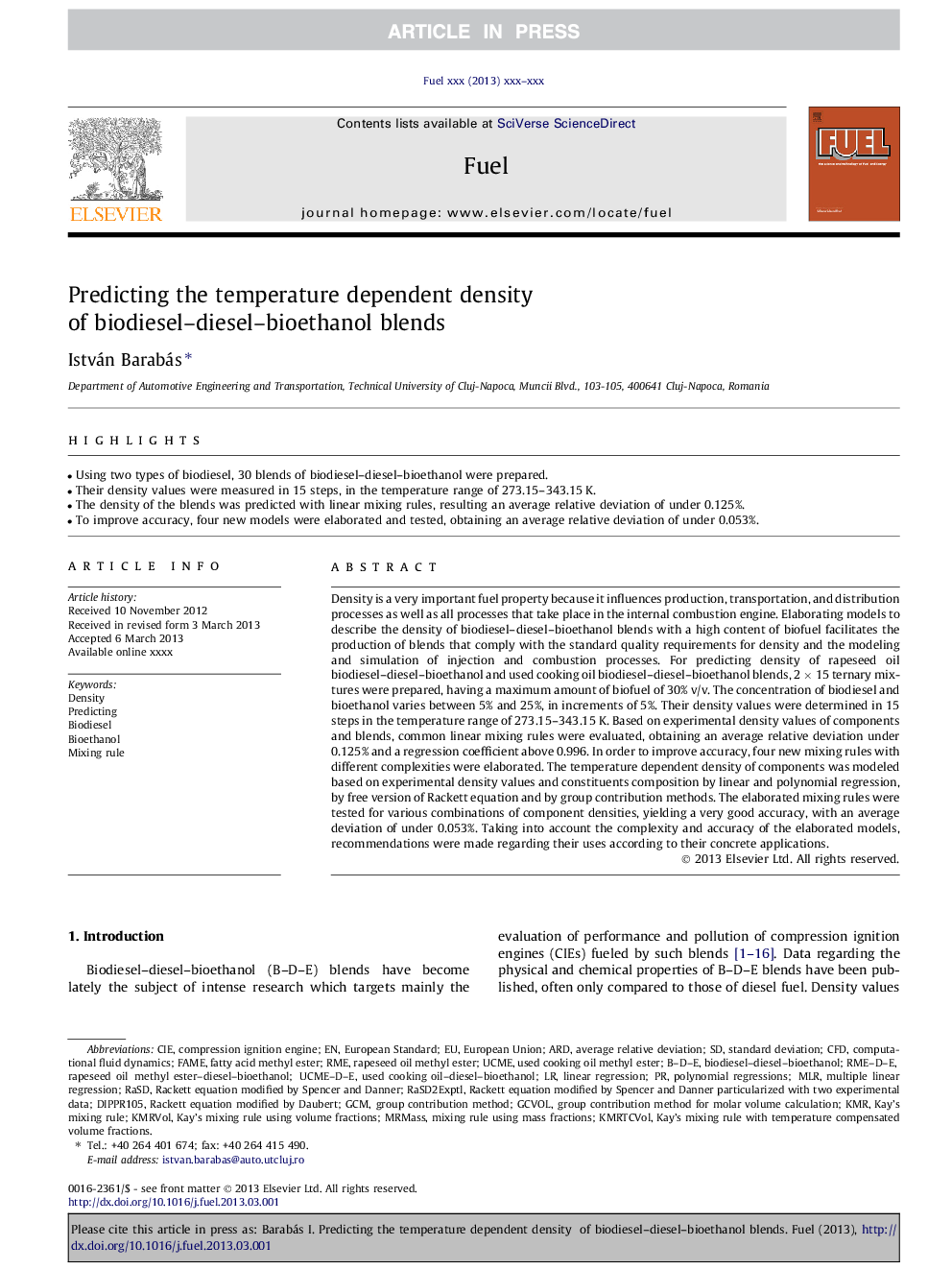| کد مقاله | کد نشریه | سال انتشار | مقاله انگلیسی | نسخه تمام متن |
|---|---|---|---|---|
| 6641456 | 461165 | 2013 | 12 صفحه PDF | دانلود رایگان |
عنوان انگلیسی مقاله ISI
Predicting the temperature dependent density of biodiesel-diesel-bioethanol blends
ترجمه فارسی عنوان
پیش بینی چگالی وابسته به دما از مخلوط بیودیزل دیزل-بیواتانول
دانلود مقاله + سفارش ترجمه
دانلود مقاله ISI انگلیسی
رایگان برای ایرانیان
کلمات کلیدی
ARDCIEMLRGCMRMERapeseed oil methyl esterUsed cooking oil methyl esterKmr - KMREuropean Union - اتحادیه اروپاEuropean standard - استاندارد اروپاییstandard deviation - انحراف معیارBioethanol - بیواتانولBiodiesel - بیودیزلCFD - دینامیک سیالاتComputational fluid dynamics - دینامیک سیالات محاسباتیGroup contribution method - روش مشارکت گروهیLinear regression - رگرسیون خطیMultiple linear regression - رگرسیون خطی چندگانه FAME - فامFatty acid methyl ester - متیل استر اسید چربMixing rule - مخلوط کردن قانونCompression ignition engine - موتور احتراق فشردهaverage relative deviation - میانگین انحراف نسبیPredicting - پیش بینیDensity - چگالی
موضوعات مرتبط
مهندسی و علوم پایه
مهندسی شیمی
مهندسی شیمی (عمومی)
چکیده انگلیسی
Density is a very important fuel property because it influences production, transportation, and distribution processes as well as all processes that take place in the internal combustion engine. Elaborating models to describe the density of biodiesel-diesel-bioethanol blends with a high content of biofuel facilitates the production of blends that comply with the standard quality requirements for density and the modeling and simulation of injection and combustion processes. For predicting density of rapeseed oil biodiesel-diesel-bioethanol and used cooking oil biodiesel-diesel-bioethanol blends, 2Â ÃÂ 15 ternary mixtures were prepared, having a maximum amount of biofuel of 30%Â v/v. The concentration of biodiesel and bioethanol varies between 5% and 25%, in increments of 5%. Their density values were determined in 15 steps in the temperature range of 273.15-343.15Â K. Based on experimental density values of components and blends, common linear mixing rules were evaluated, obtaining an average relative deviation under 0.125% and a regression coefficient above 0.996. In order to improve accuracy, four new mixing rules with different complexities were elaborated. The temperature dependent density of components was modeled based on experimental density values and constituents composition by linear and polynomial regression, by free version of Rackett equation and by group contribution methods. The elaborated mixing rules were tested for various combinations of component densities, yielding a very good accuracy, with an average deviation of under 0.053%. Taking into account the complexity and accuracy of the elaborated models, recommendations were made regarding their uses according to their concrete applications.
ناشر
Database: Elsevier - ScienceDirect (ساینس دایرکت)
Journal: Fuel - Volume 109, July 2013, Pages 563-574
Journal: Fuel - Volume 109, July 2013, Pages 563-574
نویسندگان
István Barabás,
